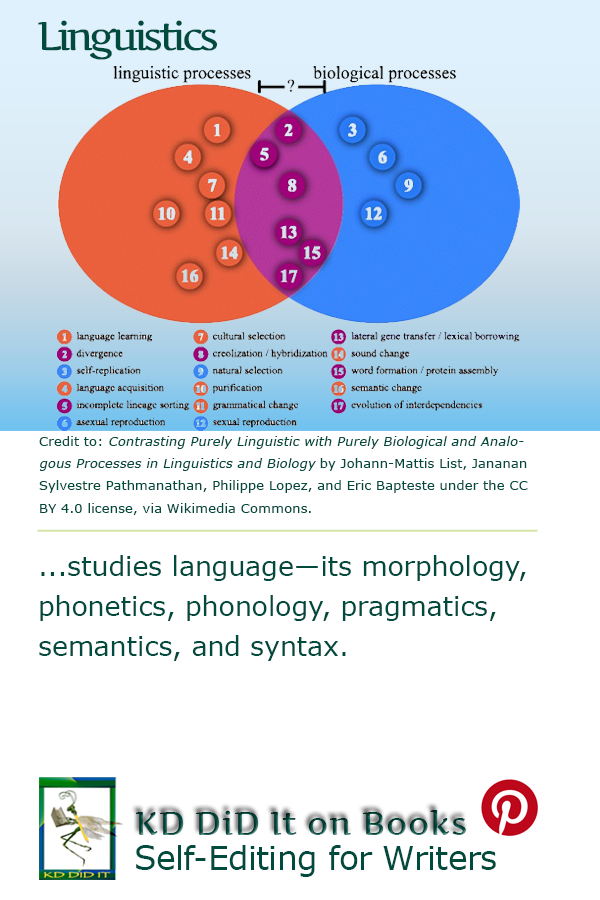Linguistics is a fascinating study in how we communicate with each other, expressing ideas, hypotheses, emotions, desires, and more. It’s a practical study that explores language — all languages — in terms of sounds, word development and change, grammar logic and development, and the relationships among languages, and more. Think analytical and descriptive. Not imaginative.
Categories of Linguistics
Naturally, the experts have broken up linguistics in a number of categories, including:
- Comparative linguistics – studies the similarities and differences between languages, in particular the comparison of related languages with a view to reconstructing forms in their lost parent languages
- Descriptive linguistics – studies the grammar, classification, and arrangement of the features of a language at a given time, without reference to the history of the language or comparison with other languages
- Ethnolinguistics – studies the relationship between language and culture and how different ethnic groups perceive the world
- Geographical linguistics – is a two-parter:
- Studies the geographic distribution of language
- How people talk about the landscape
- Historical linguistics – studies the similarities and differences between languages, in particular the comparison of related languages with a view to reconstructing forms in their lost parent languages
- Neurolinguistics – studies the neural mechanisms in the human brain that control the comprehension, production, and acquisition of language
- Psycholinguistics – studies the relationships between linguistic behavior and psychological processes, including the process of language acquisition
- Theoretical linguistics – the basic underlying structure of language that studies the core structural elements of language, namely morphology, phonetics, phonology, pragmatics, semantics, and syntax
- Sociolinguistics – studies language in relation to social factors, including differences of regional, class, and occupational dialect, gender differences, and bilingualism
- Dialectology – the scientific study of linguistic dialect exploring variations in language based primarily on geographic distribution and their associated features
For the imaginative aspect of language, explore “Literary Device“, “Word Play“, and “Figure of Speech“.
For more detail on the “anatomy” of a linguistics post, see below.
Definitions, cautions, rules, and examples for every situation as well as those bloody also-known-ases are all included.
Explore the listings below, if only to know what you’re up against.
Linguistics Posts:
Synonym versus Antonym
Synonyms, Cute, a.k.a. English is Such a Rich, Rich Language
Syntax
Anatomy of a Linguistics Post
While the posts are always being updated, the basic structure is the area of linguistics followed by its general definition and then a TOC of links to the variations on the information that follows. Color is used in a hierarchical step-down to try and corral a type of grammar with its sub-types to make it less confusing. Most of them have examples of how that bit of linguistics works.
These posts are in no way complete, and I’d love it if you’d send your own suggestions and comments to make it better . . . I don’t necessarily promise to include them, but . . .
If you know someone who could use some help with their own grammar questions, consider subscribing to KD Did It, if you’d like to track this self-editing aid for future updates.
Pinterest Photo Credits
Finite Verb Trees 1‘ is Tjo3ya’s own work under the CC BY-SA 3.0 license, via Wikimedia Commons.
Revised as of 24 October 2024
By: Kathy Davie

